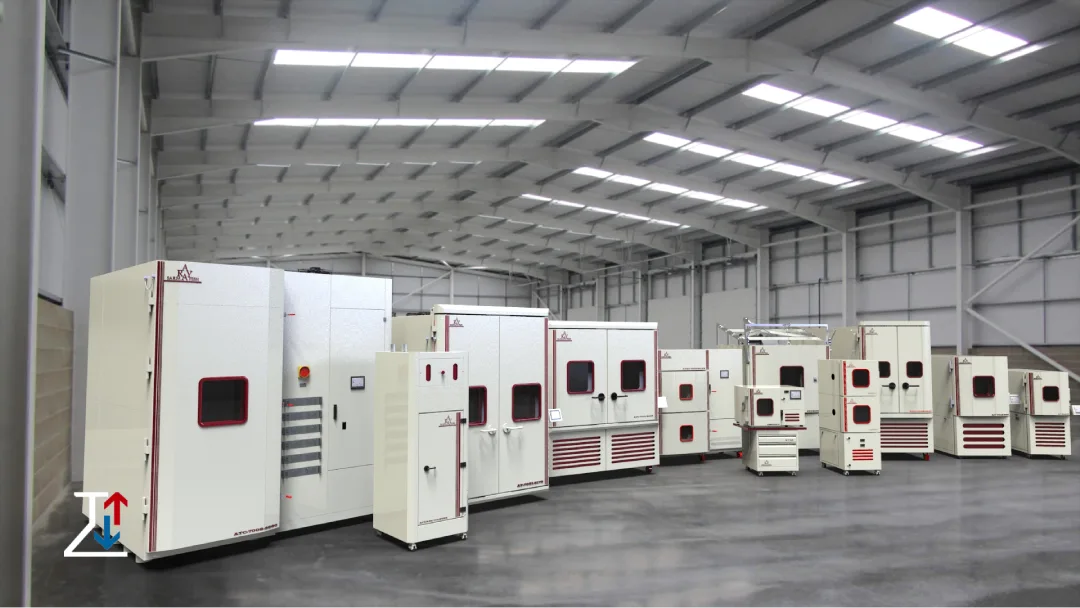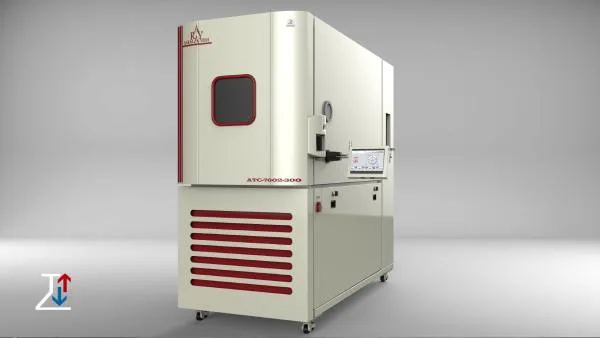
A temperature test chamber, also known as an environmental chamber, could be a specialized piece of gear utilized to subject items, materials, or components to control temperature conditions for testing and assessment purposes. These chambers are planned to recreate a wide extend of temperature conditions, from extraordinary cold to tall warm, to survey how examples perform beneath diverse warm situations. Temperature test chambers ordinarily comprise an insulated chamber with warming and cooling components, besides sensors and controllers to screen and alter temperature levels precisely. They are broadly utilized in different businesses for item improvement, quality confirmation, inquiry about, and compliance testing.
Analyze the types of temperature test chambers:

Temperature test chambers play a pivotal role in ensuring that manufactured goods meet stringent quality standards, withstand real-world conditions, and deliver optimal performance and there are Various Types of temperature test chambers with different applications are used in different industries, which we will introduce.
Temperature and humidity chamber :
The Temperature and humidity Chambers and temperature test chamber have accurate temperature and humidity control systems. Temperature test chambers help researchers and manufacturers ensure their stability against various weather conditions, including variable temperature and humidity, before releasing the product to the market.
Stair chamber:
The stair chambers, are types of temperature test chambers, are an advanced test tool that simulates real environmental conditions. By accelerating the process of aging and erosion, this device helps to understand the behavior of materials against possible failure modes and evaluates the quality of products in a short period.
Thermal shock chamber:
These types of temperature test chambers expose the desired material or product to sudden and rapid temperature changes. As a result, the products experience sudden temperature changes before being presented to the customer. This assesses the vulnerability of the product in possible environmental conditions, which may be exposed to it during use. As a result, by using a thermal shock chamber, possible weak points of the product can be identified and fixed before it is released to the market.
Click here to read about Thermal Shock Testing
UV Chamber:
The UV temperature test chamber, which is also known as the Solar Radiation Test Chamber or solar simulator, is one of the important tools in testing materials and products that are exposed to solar radiation during use.
UV Chamber investigates the long-term effects of sunlight on materials and products that are exposed to it by simulating solar radiation. Among the industries that need a UV Chamber room in their research and development department, we can mention aerospace, solar panel manufacturers, and some electronic components.
Rotary Chamber with 3 degrees of freedom:
The Rotary Chamber with 3 degrees of freedom, which is also known as the orientation test chamber or the aircraft engine test chamber, is a very advanced device for testing dynamic situations. In this type of temperature test chamber, unlike other types, it is possible to move along three axes. The Rotary test Chamber is used to test materials that are exposed to multiaxial stresses.
Atmospheric Test Chamber:
The purpose of using the Atmospheric Test Chamber or atmospheric conditions test chamber is to simulate the three layers of ozone. To simulate ozone layers, these devices must also simulate different atmospheric conditions, altitudes above sea level, different combinations of gases, high temperatures, and variable humidity levels. Also, the Atmospheric Test Chamber can control different pressures and create a vacuum state.
Using Atmospheric temperature test chambers in industries that produce airplanes, satellites, or any other product that is used at high altitudes above sea level.
Benefits of Temperature and Humidity Chambers in Testing Situations
Temperature and humidity chambers give controlled situations where items and materials can be subjected to express temperature and mugginess levels, permitting producers, analysts, and quality confirmation experts to survey their execution and unwavering quality. Let’s dig into the benefits and applications of temperature test chambers:
Comprehensive Environmental Simulation:
Temperature chambers empower comprehensive environmental simulation, imitating conditions experienced within the genuine world. Whether it’s testing electronic components, car parts, or pharmaceuticals, these chambers can imitate temperature and humidity fluctuations experienced amid transportation, capacity, and utilization. By subjecting examples to controlled conditions, producers can assess how they react to different natural stressors, guaranteeing item strength and unwavering quality.
Accelerated Testing and Product Development:
In today’s fast-paced trade environment, the speed of advertising is significant. temperature test chambers expedite testing and product development by allowing manufacturers to conduct accelerated aging tests, thermal cycling, and humidity exposure studies. By reenacting years’ worth of natural introduction in weeks or months, companies can recognize potential issues early within the improvement cycle, driving to quicker emphasis, moved forward plans, and faster time-to-market.
Quality Assurance and Compliance:
temperature test chambers play a crucial part in quality confirmation and compliance endeavors. In controlled businesses such as pharmaceuticals, nourishment and refreshment, and aviation, adherence to strict quality benchmarks is basic. These temperature test chambers empower producers to approve item execution against industry directions and client determinations. By conducting exhaustive temperature and humidity testing, companies can guarantee item judgment, security, and compliance with administrative necessities.
Optimizing Production Processes:
Temperature chambers contribute to optimizing generation forms by recognizing openings for enhancement and fetched lessening. By conducting real-world natural testing, producers can distinguish potential shortcomings in materials, plans, or fabricating forms. This data permits for focused on advancements, driving to improved item quality, diminished squandering, and expanded operational effectiveness.
Research and Development:
Analysts and researchers use Temperature and humidity chambers to develop their understanding of material science, item behavior, and natural effects. These temperature test chambers give controlled situations for examining components such as fabric debasement, erosion, and chemical responses. By conducting precise tests under controlled conditions, analysts can produce profitable bits of knowledge that drive development and the improvement of unused materials, advances, and items.
Conclusion
Temperature chambers are vital apparatuses in testing situations, offering a huge number of benefits for businesses. From comprehensive environmental reenactment to quickened testing, quality confirmation, and inquiries about advancement, temperature test chambers empower producers to improve an item’s unwavering quality, meet administrative necessities, and drive development. As innovation proceeds to advance, temperature test chambers will stay basic to guarantee the execution, solidness, and security of items and materials in differing applications.
Related articles in Aryasarmayesh: